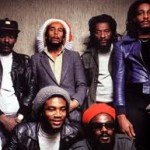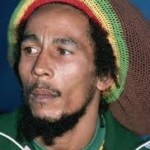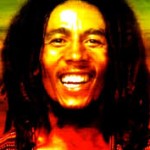But in the mid-1970s, the concept of the live album wasn’t that old, and so, as the music world began to seek out forms of music that relied heavily on the atmosphere at the moment of its delivery, the live album seemed perfect.
Few artists came to life on stage more than Bob Marley. When he turned up at the Lyceum in London in June 1975, and someone turned on the mics to lay down Live! (released in December, 1975), not only was reggae born as a landmark pop music genre, but the live album became a tool that could make an artist, not just money.
Marley and his ever-changing band, The Wailers, already had a large following. Huge in the Caribbean and in various other musical outposts, he was, by 1975, a big name in music and a growing political presence in his birthplace, Jamaica.
These were heady days for the Caribbean with the West Indies cricket team taking no prisoners and beating all the old whitey teams wherever they played. The world was theirs. All it needed was a soundtrack. Enter BMW — the band not the car.
The Catch a Fire (1973) studio album had gained the band a foothold internationally, generally among expat West Indians flung across the world. Natty Dread (1974) continued the band — and Marley’s — global reach.
Natty Dread was the first Marley album as “Bob Marley and The Wailers” (as opposed to just The Wailers) and was the first without fellow reggae legends, Peter Tosh and Bunny Wailer. The Natty Dread tour for this album was to spawn Live!
Most of the tracks on Live! are from Natty Dread or Catch a Fire and evolved the style Marley, Tosh and Wailer were inventing during the early 1970s. Marley’s emerging reggae trope mixed politically charged and social justice infused lyrics with unending riffs and fat rhythmic hooks and dubs. It delved deep into the roots of Caribbean and African music.
Marley’s stunning presence was the X-factor. The dreads, the gaunt face, the massive grin, the spring-loaded thighs setting his torso on a bobbing metronome beat in time with the thumping Wailers’ bottom end were the stuff of revolution.
His charismatic delivery charged the for-the-people lyrics and meditative back beat with a wattage that the prevailing sounds of the ’70s needed massive stadiums and huge amp stacks to generate. The Lyceum Theatre, in London’s West End, holds barely 2000 people, and Marley blew the roof off with his power.
The UK leg of the Natty Dread tour came after the US dates. It was there that the ripples began spreading across the Atlantic and put bums on seats at the Lyceum.
As Marley and his band crossed the ocean, not far removed from the Kingstown slums Marley depicted so often, so too did his music cross over into the largely white, Western musical mainstream.
Popular music would never be quite the same. Many of those bums on the Lyceum seats were white ones — and they were lifted and set in motion just as fast as those of black fans. Marley arrived in London as the official Next Big Thing, one of the first, true, cross over artists.
Those listening got an education. Marley told stories from the trenches of poverty and injustice; much of it from personal experience. But the anger and fear of oppression was tempered by Marley’s overarching belief in peace and humanity, drawing on his adherence to the Rastafarian religion.
For all its pain, the slum could give birth to real beauty; “One good thing about music, when it hits you feel no pain,” he sings in the opening lines to the first track on Live!, Trenchtown Rock. That’s a positive in a place where innocent people get hit with pain pretty regularly.

Burnin’ and Lootin’ calls on the people to stop taking bullshit and take action. It’s unlikely Marley is calling for a riot; more that he is asking for a reckoning. “Burnin’ all illusion tonight…..burnin’ all pollution tonight…..” sounds more like a call for personal truth than a political overthrow. Similarly, Them Belly Full, while seemingly a call to the streets, can be read as more a warning to the powers that be. Marley is always more likely to seek bridges than to build moats.
Lively Up Yourself is one the album’s most enduring tracks and, going by the reaction from the Lyceum punters, was one of the most popular in the set back then. The simple riff is almost impossible to not move to, and you can almost hear the bodies sweating in the darkness they shift move to the beats.
This classic is followed by a parade of similarly iconic tracks. No Woman No Cry, I Shot the Sheriff, and Get Up Stand Up are all Marley at his absolute best. The album’s classic status largely rests on these songs and Marley’s stellar journey was hugely propelled after his performance on Live!
Live! put Marley on the map, but it also recreated the music audience’s expectations. No longer would popular music be allowed to simply fall into a narrow collection of musical boxes and generic landscapes. Pop music in the big markets, in the West at least, became more complex, more layered and more worldly.

Bob Marley rewrote the sound of modern music. His beats and hooks, drawn from deep ethnic origins, became a standard structure to root numerous emerging music forms from funk to rap and beyond.
But the man himself stood above his radical achievements in music. As an icon and as a figure of adulation, few have reached such levels so quickly and from such an unlikely source as Bob Marley.
Live! was one jewel in a very glittering crown; Marley’s life was tragically short — he died at 36 and he would have been 70 this year — but his music still carries the weight of history, the beats of generations and the power of revolution.








You must log in to post a comment.